Exp. 389: Hawaiian Drowned Reefs
船上レポート
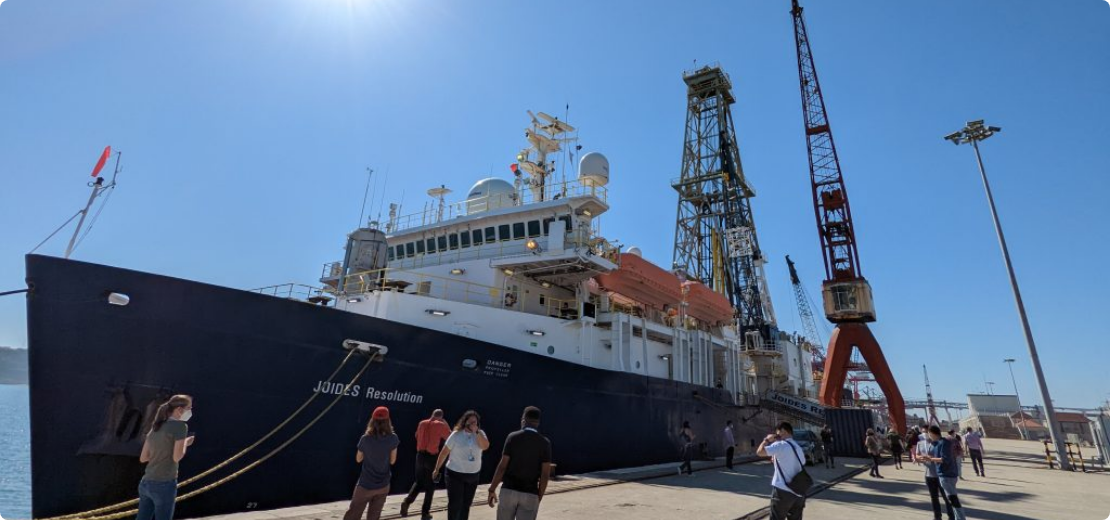
船上レポート
-
船上レポート1
(2023年 09月21日受領)
-
Coral reefs, sunrises, and doughnuts – IODP Expedition 389 (Hawaiian Drowned Reefs)
-
船上レポート2
(2023年 10月21日受領)
-
Milestone, close call, and lots of nice cores – IODP Expedition 389 (Hawaiian Drowned Reefs)
船上レポート1:Coral reefs, sunrises, and doughnuts – IODP Expedition 389 (Hawaiian Drowned Reefs)
Marc Humblet (Nagoya University)
I arrived in Honolulu a few days before boarding the ship that was to become my home for two months, just enough time to buy a few items that I had overlooked in my travel checklist, and more importantly, to meet other members of the science team, some who I already knew, some who I was meeting for the first time.
We boarded on the 31st of August. Our ship is the MMA Valour, an 84 m long multi-purpose platform supply vessel. IODP Expedition 389 is a mission specific platform expedition, which means that the ship had to be transformed to fulfil the requirements of the mission. For this expedition, a remotely operated seabed coring system was loaded on the ship, and containers were installed at the rear to accommodate lab facilities and the equipment needed for coring.
We departed from Honolulu in the evening of the 31st, and after some testing of the coring equipment offshore Oahu, we transited to our first coring site off the western coast of Hawaii (the Big Island). Since then, we have been staying in the same area and are now stationed about 10 km from the coast. From where we are, we have a stunning view of Mauna Kea, the tallest volcano in Hawaii.
Work on the ship is organized in shifts: a day shift and a night shift. I was assigned to the night shift, which means that I work from midnight to noon. I wake up every day at 11:00 pm, have my breakfast at 11:30 pm, my lunch at 6:00 am, and my dinner at 12:00 am. The first few days are tough, but you ultimately get used to it. There are advantages to the night shift. One is the quietness you experience during the night-time hours. You also get to see a beautiful sunrise every morning (daily contemplation time guaranteed!). You escape most of the afternoon heat, and – in my opinion, a crucial advantage – you get to enjoy the morning doughnuts, a perfect excuse to take a well-deserved pause during your shift!
Our expedition is collecting cores from submerged fossil coral reefs around the island of Hawaii to reconstruct the history of sea-level and climate changes over the past 500,000 years and understand how coral reefs and reef organisms have responded to environmental changes.
It has been extremely rewarding to see the cores that were brought on deck and discover for the first time these amazing sequences of fossil reef framework, preserved for tens or hundreds of thousands of years under the seafloor, and now revealing the beauty of an ecosystem teaming with life in the distant past. I cannot wait to see more of them!

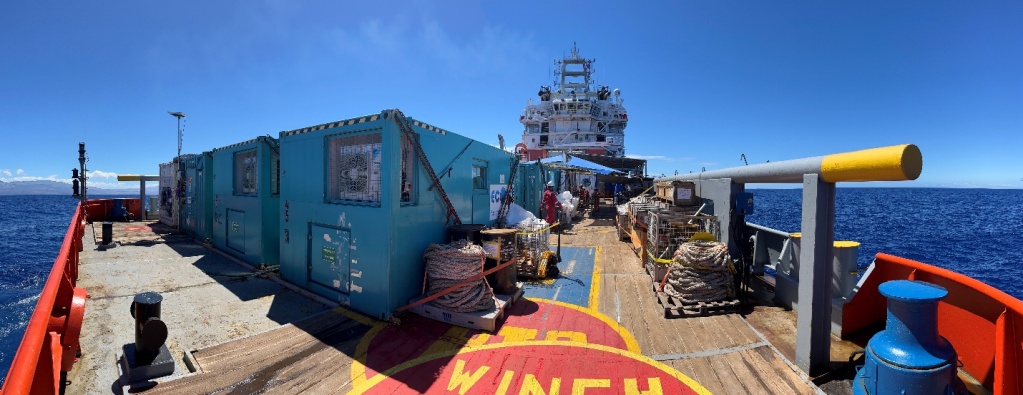
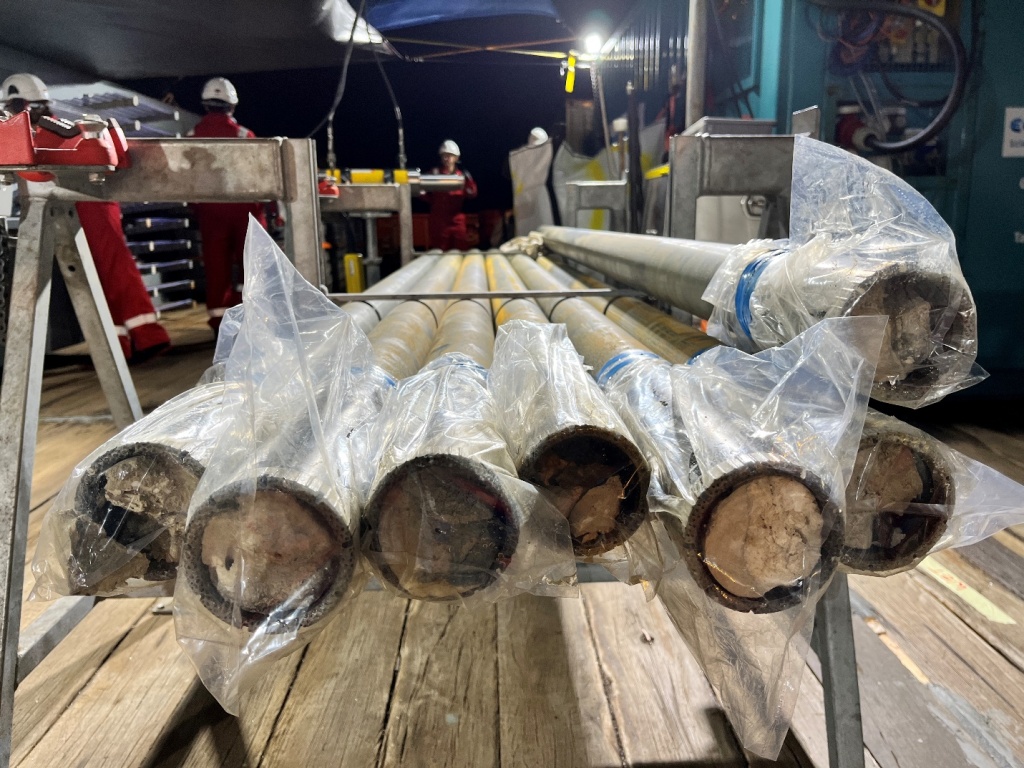
船上レポート2:Milestone, close call, and lots of nice cores – IODP Expedition 389 (Hawaiian Drowned Reefs)
Marc Humblet (Nagoya University)
A port call in Honolulu at mid-expedition (after four weeks at sea) gave us the opportunity to stretch our legs and finally (finally!) enjoy a short dip in the ocean (the sensation of delight cannot be described with words). Our outing on land lasted just a few hours but was enough to start the second leg full of renewed anticipation and energy.
We are now entering the third week of the second leg. Only a little over two weeks has passed since the port call, and yet so much has happened that I feel it must be longer.
The second leg started with a milestone: the 100th mission specific platform (MSP) site cored since the start of MSP expeditions in 2004. From the Arctic to the tropics, 100 sites, 10 expeditions, nearly 20 years of discovery. IODP Expedition 389 is the third MSP expedition targeting submerged fossil reefs after IODP Expedition 310 (Tahiti) and 325 (Australia’s Great Barrier Reef).
Then, as coring was under way, and we were easing into what should have been a quiet night shift… our ship suddenly started to drift away. This was not good news. Since the remotely operated seafloor corer is connected to the ship by a cable, the ship must always remain close to the coring site at a specific location. To do so it is equipped with a dynamic positioning (DP) system. The DP system knows the position of the ship thanks to GPS signals received from satellites and always maintains the desired position by activating thrusters at the bow and stern. The loss of GPS signals caused emergency recovery to be activated, and the corer was quickly lifted from the seabed and brought back onboard … intact. A relief!
Soon after this unfortunate event, we transited to the windward side of Hawaii and resumed coring operations. All pessimism that we may have felt at that point vanished during the few days that we have now spent on this side of the island. We have seen some of the most impressive core sections collected since the start of the expedition.
One borehole penetrated a 30 m thick section of fossil coral reef and reached a basaltic lava flow buried underneath – a unique sequence of strata, frozen in time for hundreds of thousands of years, telling a vivid story of volcanic eruptions followed by the birth and demise of a rich ecosystem. The contact between the basalt and the first corals above shows the very moment when reef growth initiated as sea level rose and the newly available substrate was colonized by corals and other reef organisms.
Another section of fossil coral reef, this time 46 m thick, was cored at a shallower site, exposing the interior of a fossil reef formed tens of thousands of years ago. After bringing back the seafloor corer and its precious cargo onboard, the core liners were pulled out from their barrels and their content unveiled, revealing striking patterns of pale yellow, white, and grey colors. This seemingly abstract design is produced by the three main components of the coral reef framework: corals, algal crusts, and microbialite, a sediment whose formation is mediated by microbial activity.
As we are nearing the end of the coring operations, we are already planning for the next phase of the expedition, when the cores will be split lengthwise, and the clear-cut sections will reveal their content with much more details. The onshore science party will take place at the IODP Bremen Core Repository (BCR) at the MARUM – Center for Marine Environmental Sciences, University of Bremen, Germany, and will mark the beginning of an in-depth analysis of all the cores that we have collected to extract as much information as we can about climate and sea-level changes and their impacts on coral reef ecosystems. Another exciting journey will then begin!
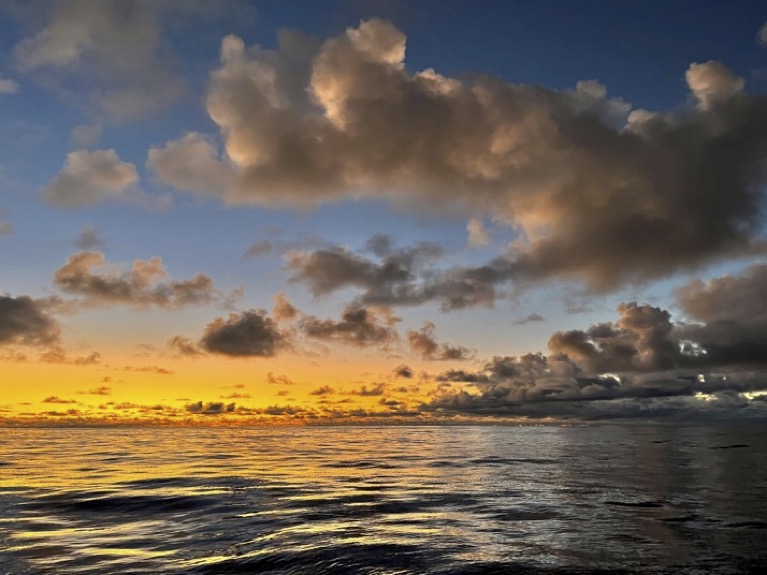
Sunrise over a calm sea. Credits: ECORD/IODP.
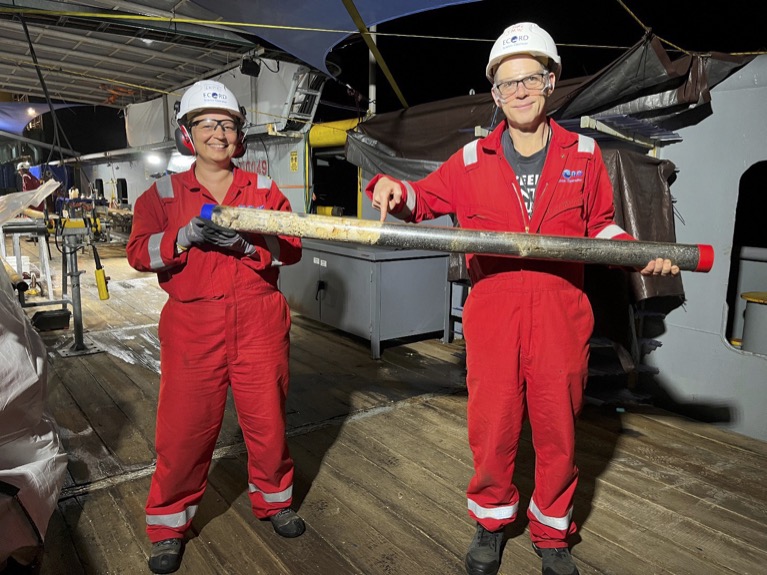
The contact between the basalt (black) and the reef section (white) representing the initiation of reef growth. From left to right: Luzie Schnieders and Jody Webster. Credits: ECORD/IODP.

Fossil coral reef framework composed of corals (pale yellow), algal crusts (white), and microbialite (grey). The length of the section is 145 cm. Credits: ECORD/IODP.
